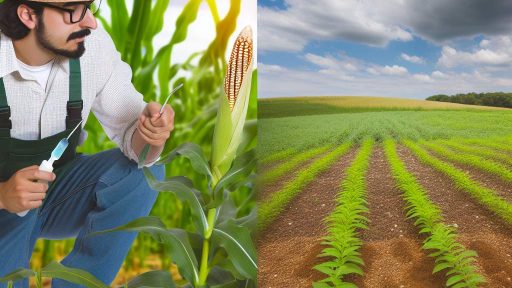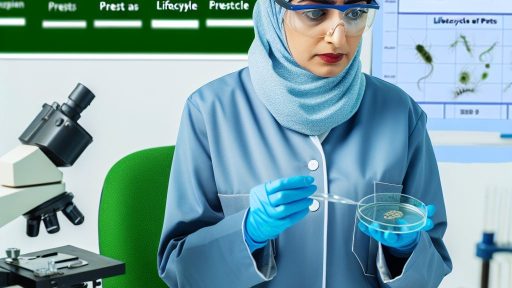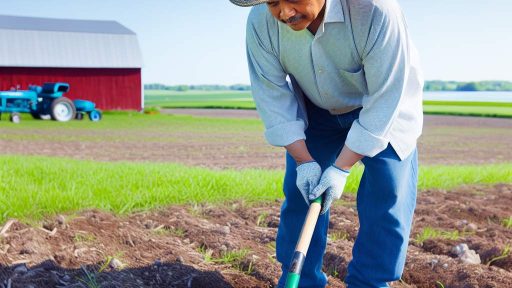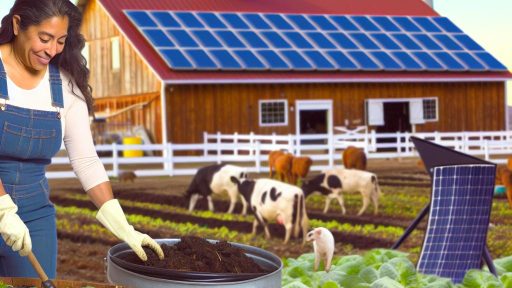Introduction to Controlled Environment Agriculture
Understanding Controlled Environment Agriculture
Controlled Environment Agriculture (CEA) is revolutionizing farming techniques.
This method involves growing crops in a controlled environment.
It significantly reduces dependency on natural weather conditions.
Crops thrive under regulated temperature, humidity, and light levels.
Consequently, farmers can produce food year-round.
Importance of CEA in Modern Agriculture
Modern agriculture faces numerous challenges like climate change.
CEA addresses these issues through innovative farming solutions.
First, it enhances food security by increasing crop yields.
Next, it allows for efficient use of resources like water and fertilizers.
As a result, it minimizes waste and environmental impacts.
Adapting to Urban Settings
CEA is particularly beneficial in urban agriculture.
It enables farming in areas with limited arable land.
Vertical farms and hydroponics are prominent examples.
Urbanites gain access to fresh produce with reduced transport emissions.
Technological Integration
Technology plays a pivotal role in advancing CEA.
Transform Your Agribusiness
Unlock your farm's potential with expert advice tailored to your needs. Get actionable steps that drive real results.
Get StartedAutomation and sensors optimize growing conditions.
Data analytics provides real-time insights into crop health.
Such innovations improve productivity and reduce labor costs.
Future Prospects of CEA
The future of CEA is promising with continuous advancements.
Research focuses on improving crop varieties for controlled settings.
Consequently, this pushes the boundaries of sustainable farming.
Ultimately, CEA has the potential to transform global food systems.
Overview of Different Controlled Environment Agriculture Systems
Greenhouses
Greenhouses utilize glass or plastic structures to create optimal growing conditions.
They allow farmers to control temperature, humidity, and light exposure effectively.
This control significantly enhances crop yield and quality.
Moreover, greenhouses protect plants from extreme weather and pests.
Consequently, they extend the growing season for various crops.
Farmers can grow a diverse range of plants in greenhouses, including fruits and vegetables.
Additionally, many modern greenhouses integrate technology for precision agriculture.
Vertical Farms
Vertical farms maximize space by stacking layers of crops vertically.
This method is particularly useful in urban settings with limited land availability.
By employing hydroponics or aeroponics, vertical farms reduce water usage significantly.
Furthermore, they can maintain optimal growing conditions year-round.
As a result, vertical farms can produce food close to consumers, reducing transportation costs.
Many comprehensive systems utilize advanced sensors and automation for efficiency.
Indoor Agriculture
Indoor agriculture encompasses various methods of growing crops inside buildings.
This method allows for complete control of the growing environment.
Indoor farms typically use LED lighting to mimic natural sunlight.
Moreover, they can cultivate crops year-round, independent of weather constraints.
Showcase Your Farming Business
Publish your professional farming services profile on our blog for a one-time fee of $200 and reach a dedicated audience of farmers and agribusiness owners.
Publish Your ProfileIndoor agriculture can produce a range of crops, from leafy greens to herbs.
Additionally, this approach minimizes land usage and maximizes production potential.
Thus, indoor farming represents an innovative solution to food security challenges.
Key Technologies Used in Controlled Environment Agriculture
Hydroponics
Hydroponics allows for soil-free plant cultivation.
This system uses nutrient-rich water to support growth.
Plants receive essential minerals directly through the water.
Furthermore, hydroponics saves water compared to traditional methods.
It also maximizes space usage in limited areas.
Farmers can produce high yields year-round with hydroponics.
Companies like GreenSpace EcoFarm utilize hydroponic techniques effectively.
Aeroponics
Aeroponics is a cutting-edge method of growing plants in mist.
This technique ensures that roots receive oxygen and nutrients efficiently.
By eliminating soil, aeroponics reduces the risk of pests and diseases.
This system promotes faster plant growth through optimal resource utilization.
Moreover, aeroponics requires less water than conventional agriculture.
Farmers often use aeroponics in urban settings for fresh produce.
AeroTech Solutions specializes in advanced aeroponic systems.
Nutrient Film Technique
Nutrient Film Technique (NFT) is a popular hydroponic method.
This system continuously recirculates a thin film of nutrient solution.
It allows roots to absorb nutrients while remaining exposed to air.
NFT systems are efficient and easy to scale according to needs.
Additionally, they minimize water usage significantly.
Growers often prefer NFT for crops like lettuce and basil.
Many local farms adopt NFT for sustainable production efforts.
Gain More Insights: Integrating Drones Into Sustainable Farming Practices
Benefits of Controlled Environment Agriculture
Water Conservation
Controlled Environment Agriculture (CEA) significantly reduces water usage.
This method utilizes recirculating systems to minimize waste.
Moreover, it allows for more precise water delivery to plants.
As a result, plants receive only the moisture they need.
Consequently, farmers can achieve higher yields with less water.
This efficient use of water directly benefits sustainability efforts.
Ultimately, CEA helps mitigate water scarcity issues worldwide.
Space Efficiency
CEA maximizes the use of available space for farming.
Vertical farming techniques allow for multiple layers of cultivation.
This design optimizes production in smaller areas.
Furthermore, urban environments can accommodate CEA techniques easily.
Thus, cities can contribute to local food supplies effectively.
Additionally, less land usage reduces the pressure on natural ecosystems.
With CEA, food production can occur where space is limited.
Year-Round Production
One of the key advantages of CEA is year-round crop production.
Showcase Your Farming Business
Publish your professional farming services profile on our blog for a one-time fee of $200 and reach a dedicated audience of farmers and agribusiness owners.
Publish Your ProfileThis system shields plants from seasonal fluctuations.
Controlled environments maintain optimal conditions regardless of outside weather.
Moreover, growers can choose crop cycles without seasonal constraints.
This flexibility helps meet year-round consumer demand.
Consequently, businesses can achieve stable income throughout the year.
Year-round production enhances food security significantly.
Gain More Insights: How Farm Management Software Enhances Crop Planning Efficiency
Challenges Faced in Controlled Environment Agriculture
Initial Investment Costs
Controlled environment agriculture (CEA) involves significant initial costs.
Farmers must invest in advanced technologies and equipment.
Greenhouses, sensors, and climate control systems can be expensive.
Additionally, the setup of hydroponic or aeroponic systems adds to the expense.
Many new farmers struggle to secure financing for these high costs.
Investment decisions often require careful financial planning.
Moreover, the profitability of CEA is not guaranteed in the short term.
Thus, risk assessment becomes crucial for potential investors.
Energy Consumption
Energy consumption remains a significant challenge in CEA.
Climate control systems rely heavily on electricity.
Heating, cooling, and lighting can lead to high energy bills.
Additionally, many regions face fluctuating energy costs.
Consequently, energy efficiency measures must be implemented.
Farmers often explore renewable energy options to offset costs.
Investments in solar panels or wind turbines can be beneficial.
However, the initial cost of these technologies can be daunting.
Technical Expertise
Technical expertise is essential for successful CEA operation.
Farmers must be well-versed in various technologies involved.
Operating sensors, managing growth cycles, and optimizing systems pose challenges.
Many traditional farmers may lack this specialized knowledge.
Training programs can bridge the knowledge gap effectively.
Institutions and organizations offer courses on CEA practices.
Furthermore, hiring skilled personnel can alleviate this issue.
Yet, the cost of hiring experts can strain budgets as well.
Explore Further: Maximizing Crop Yields with Controlled Environment Agriculture
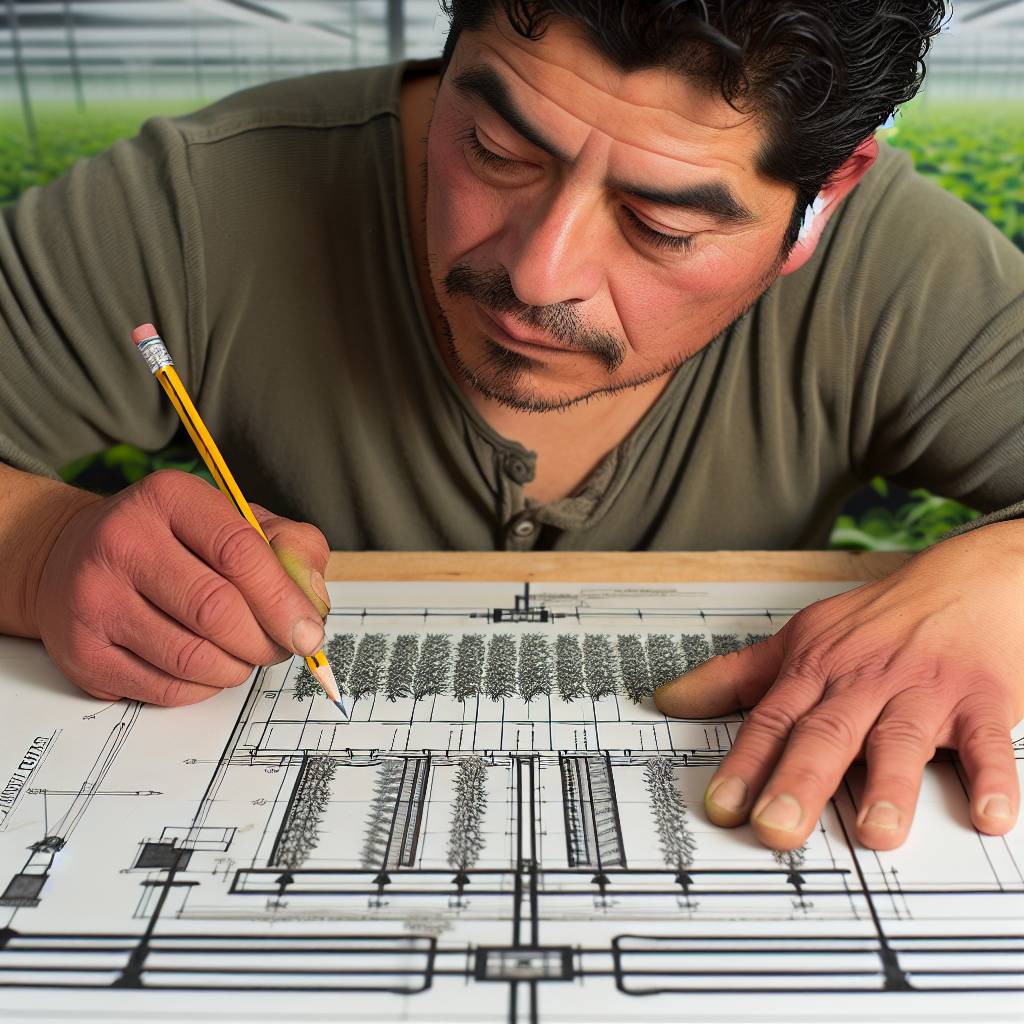
Case Studies of Successful Controlled Environment Agriculture Farms Worldwide
The Vertical Farm in Singapore
The vertical farm in Singapore, operated by Sky Greens, showcases innovative farming techniques.
This facility uses a patented rotating system to maximize sunlight exposure.
Additionally, it employs an efficient irrigation system that conserves water.
As a result, Sky Greens produces fresh vegetables for local markets throughout the year.
This project has significantly reduced food miles, enhancing sustainability.
Urban Agriculture in New York City
Bryant Urban Farm is a rooftop farm that transforms underutilized spaces in urban areas.
It provides fresh produce directly to local restaurants and food shares.
Importantly, it educates the community about sustainable practices.
Showcase Your Farming Business
Publish your professional farming services profile on our blog for a one-time fee of $200 and reach a dedicated audience of farmers and agribusiness owners.
Publish Your ProfileThis initiative fosters community engagement and promotes local food systems.
Furthermore, it creates green jobs in a dense metropolitan area.
Aquaponics Innovation in Perth, Australia
The Urban Aquaponics system in Perth integrates fish and plant farming seamlessly.
Here, fish produce waste that serves as organic fertilizer for plants.
This connection minimizes water usage and enhances nutrient cycling.
Consequently, this farm supplies local markets with fresh fish and vegetables.
It effectively promotes local economic resilience and food security.
The Impact of CEA on Local Communities
CEA farms often strengthen local food systems and foster community development.
They provide fresh produce that improves public health outcomes.
Moreover, these farms deliver educational programs on sustainable agriculture.
This knowledge empowers individuals to grow their own food.
Controlled environment agriculture systems contribute positively to local economies.
They create jobs, enhance access to healthy food, and inspire innovation.
Find Out More: Streamlining Agricultural Payments Using Blockchain Technology
Future Trends in Controlled Environment Agriculture
Sustainable Practices
Controlled Environment Agriculture (CEA) emphasizes sustainable practices to enhance efficiency.
Growers are increasingly adopting organic and regenerative methods.
These practices conserve resources and reduce environmental impact.
In addition, they promote biodiversity within farming systems.
CEA systems utilize renewable energy sources, such as solar or wind power.
This shift minimizes reliance on fossil fuels in agricultural operations.
Water conservation technologies play a pivotal role in sustainability.
Growers implement advanced irrigation systems for optimal water efficiency.
These systems allow precise control over water usage in farming.
Utilizing closed-loop systems reduces waste and maximizes resource utilization.
Automation in CEA
Automation is transforming CEA by enhancing operational efficiency.
Smart sensors monitor plant health in real-time.
This technology allows farmers to respond promptly to changing conditions.
Automated climate control systems optimize growing environments.
These systems adjust temperature and humidity based on plant needs.
Robots are increasingly used for planting, maintaining, and harvesting crops.
This automation reduces labor costs and increases productivity.
Additionally, data analytics support decision-making in CEA.
Predictive models help growers anticipate future crop demands.
Integration with Smart Farming Technologies
CEA integrates seamlessly with advanced smart farming technologies.
Internet of Things (IoT) devices gather and transmit data from the field.
This connectivity enhances farm management through real-time insights.
Farmers utilize analytics tools to evaluate operational performance.
Furthermore, leveraging machine learning improves crop management strategies.
Smart farming technologies allow for better prediction of yields.
Drone technology is also gaining traction in CEA practices.
Showcase Your Farming Business
Publish your professional farming services profile on our blog for a one-time fee of $200 and reach a dedicated audience of farmers and agribusiness owners.
Publish Your ProfileDrones facilitate aerial monitoring of crops and resource use.
This technology enhances precision agriculture initiatives.
Overall, the integration of smart technologies signifies a major step forward in CEA.
The Role of Controlled Environment Agriculture in Addressing Global Food Security and Climate Change
Global Food Security Challenges
The world faces significant challenges related to food security.
Population growth continues to strain existing food systems.
Moreover, climate change disrupts agricultural practices worldwide.
As a result, reliable food sources are becoming increasingly limited.
Many regions also experience heightened vulnerability to food shortages.
Controlled Environment Agriculture Defined
Controlled Environment Agriculture (CEA) offers a promising solution.
This approach utilizes technology to create optimal growing conditions.
CEA can function in various environments, from urban to rural settings.
By controlling light, temperature, and humidity, growers can increase yields.
Essentially, CEA allows for year-round production, regardless of external weather.
Benefits of CEA for Food Security
CEA enhances food security by increasing local food production.
This method significantly reduces transportation needs, cutting carbon emissions.
Additionally, CEA systems require less land compared to traditional farming.
Farmers can produce food in urban areas, bringing fresh produce closer to consumers.
Furthermore, CEA minimizes pest-related crop losses through a controlled environment.
Adapting to Climate Change
One key advantage of CEA is its resilience to climate change.
Growers can adapt to fluctuating weather patterns effectively.
CEA systems rely on renewable energy, reducing overall carbon footprints.
Additionally, indoor farming mitigates the impact of extreme weather events.
This adaptability ensures stable food supplies even during climate-related shocks.
Investment and Technological Innovation
Investment in CEA technologies is rapidly increasing worldwide.
Innovations include advanced sensors, artificial intelligence, and automation.
These technologies streamline operations, enhancing productivity and efficiency.
Moreover, community-supported agriculture models are on the rise.
Such models foster local investment and build stronger food networks.
Partnerships for Sustainable Growth
Collaborative efforts are essential for scaling CEA practices effectively.
Governments and private entities should work together to support CEA development.
Educational initiatives can inform farmers about sustainable practices.
Partnerships can also drive research into new, sustainable CEA methodologies.
Driving Policy Change
Policy frameworks must adapt to support innovative farming methods.
Incentives for CEA practices can encourage widespread adoption.
Additionally, governments should invest in infrastructure to support local food systems.
In doing so, they can address both food security and climate change challenges.
Ultimately, strategic policy changes can enhance the resilience of global food systems.
Additional Resources
Precision Agriculture: Benefits and Challenges for Technology …
Controlled Environment Agriculture | OSU Continuing Education

